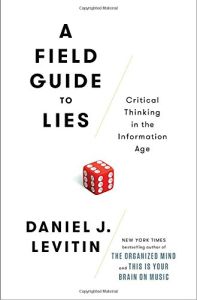Join getAbstract to access the summary!

Join getAbstract to access the summary!
Daniel J. Levitin
A Field Guide to Lies
Critical Thinking in the Information Age
Dutton, 2016
What's inside?
How to improve the quality of your thinking.
Recommendation
Social scientist Daniel J. Levitin explains the many factors that make it hard to think clearly. He addresses common issues in how people think about numbers, words, concepts and the world. He provides suggestions on how to correct these mistakes and improve the quality of your thinking. And he explains how people mislead each other, be it intentional or accidental. If you’d like to cut through the storm of misinformation that marks the information age, getAbstract recommends this useful guide – an excellent tool for anyone interested in dispelling deception.
Summary
About the Author
Daniel J. Levitin is Founding Dean of Arts & Humanities at the Minerva Schools at Keck Graduate Institute, Distinguished Faculty Fellow at University of California, Berkeley, and James McGill Professor Emeritus of Psychology at McGill University. He has written four best-selling books, including The Organized Mind.


















Comment on this summary